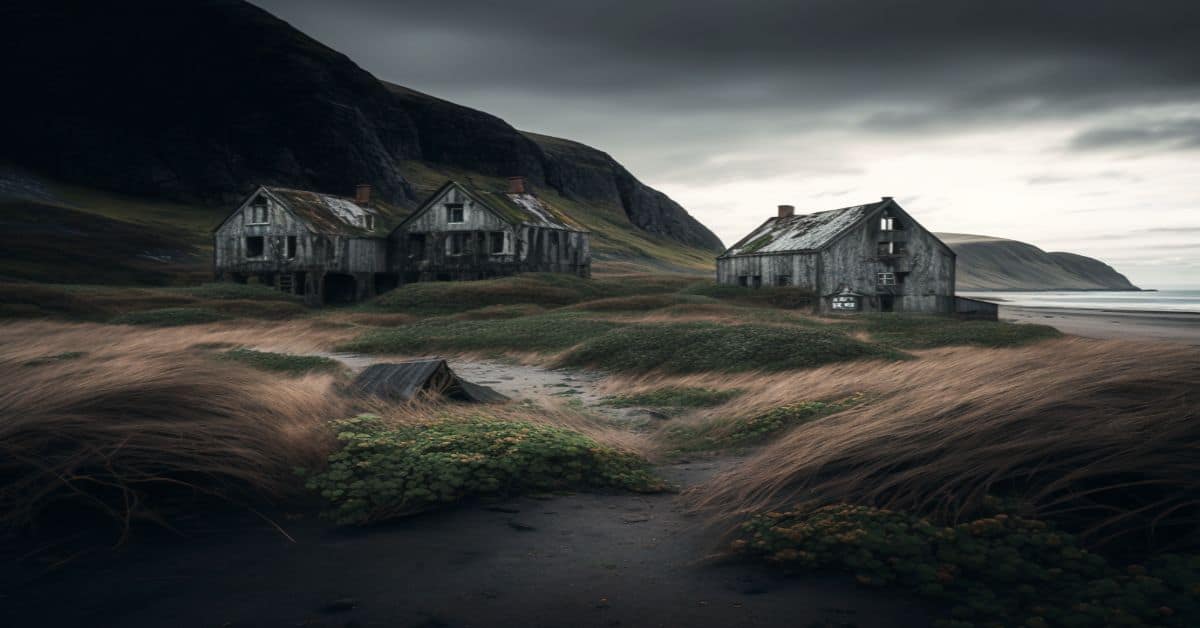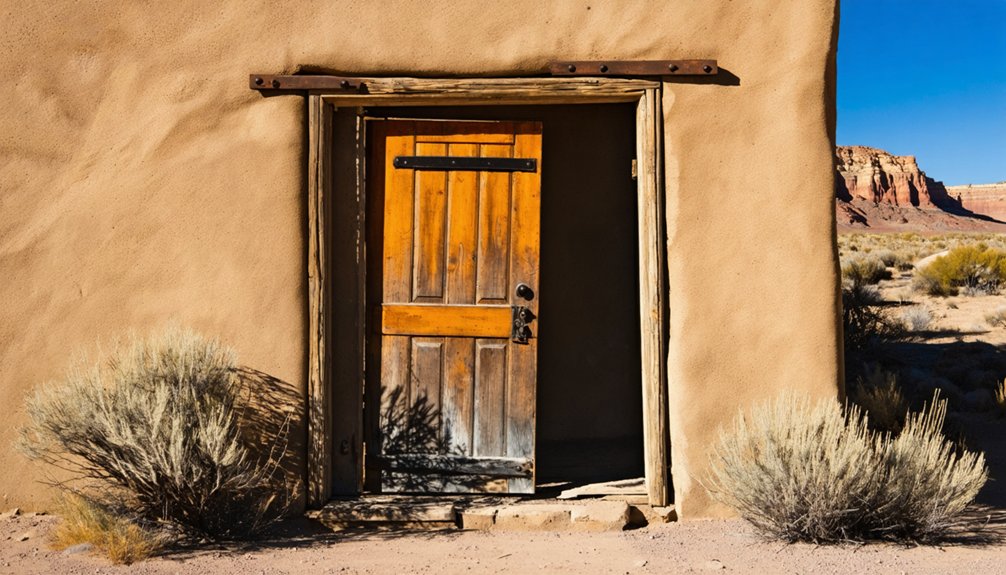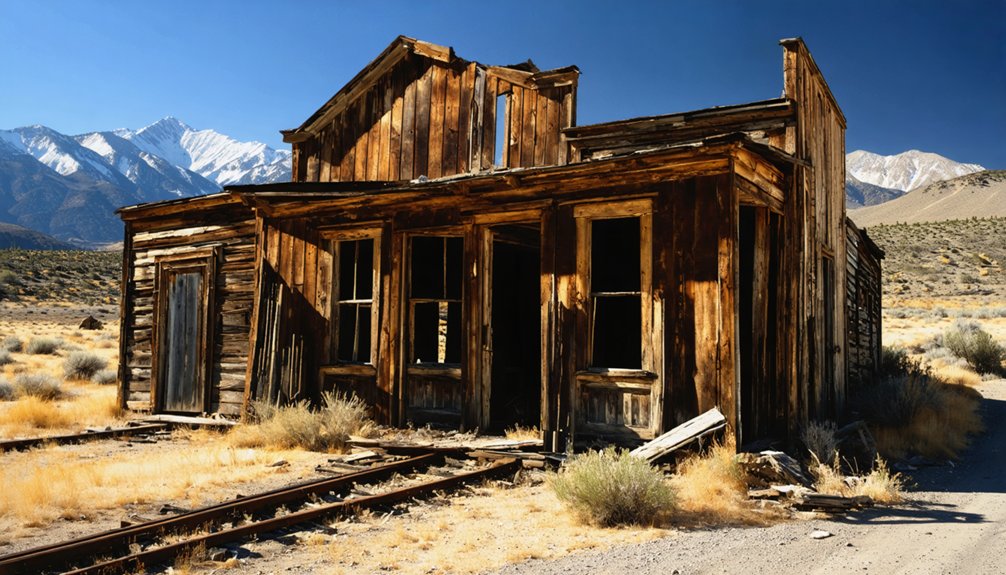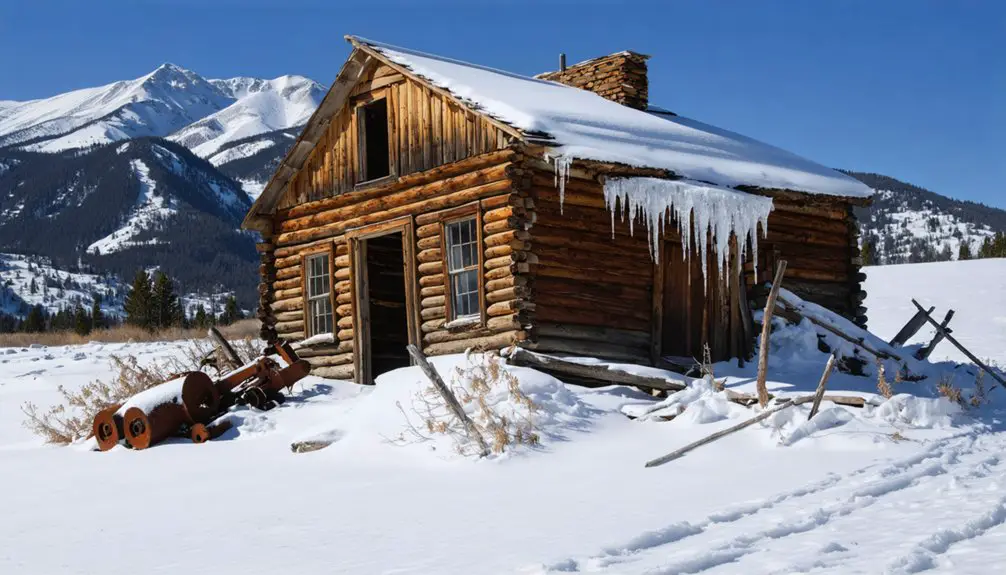The Mormon State gets its name from being the only state where most of its population belongs to the same church, the Church Of Jesus Christ Of Latter-Day Saints (LDS Church). Utah was populated mainly by Native Americans until the 15th century, when the Spanish arrived looking for the mythical city of gold, then known as Cibola.
This legend was famous around this century for claiming seven lost cities made of gold, and they would be found in the New Mexico Territory.
Utah has about 150 ghost towns, representing a fair share of this country’s ghost town collection. Other states such as Wyoming, Texas, or Arizona may come to mind, but the Beehive State is home to some of the most beautiful Old Western settings you’ve undoubtedly seen in a movie.
Utah is also the 45th state, but its late addition to the Union came from disputes between the federal government and the dominant religious community. It wasn’t until late in the 19th century, when polygamy was abolished as a social doctrine, that Utah was finally admitted as a state on January 4, 1896.
Grafton, Utah
Have you ever seen Butch Cassidy and The Sundance Kid? If you have, you’ve already seen this beautiful town, which is said to be the most photographed and filmed ghost town in the Old West.
Grafton was first settled in 1859 by Mormons exiled from Illinois due to growing tensions between communities led by Bringham Young, the new leader of the LSD Church, after the death of Joseph Smith.
They established a cotton farm in this area and called it Wheeler, but it was short-lived because it was destroyed by the Great Flood of 1862. Another town was rebuilt about a mile upriver and was called New Grafton until the “New” was dropped.
Nevertheless, flooding and silt continued to plague the settlement until 1866, when the Black Hawk War broke out. The fear of Indian attacks spread widely, and consequently, all the Grafton residents relocated to Rockville, a city still around today.
It is the most sought-after location for Old West photography because it is the most well-kept and preserved ghost town in the United States. The whole city is a film location, as has been since 1946 when film producer Harry Sherman bought it off of one of the three remaining inhabitants.
Cisco, Utah
Cisco started in the 1880s as a railroad stop with a saloon and a water filling station. It slowly grew into a proper city with stores, restaurants, and hotels to accommodate arriving settlers and traders. It was a notorious livestock town and famous for having around 100,000 sheep when sheepherders and cattle ranchers came around the turn of the 20th century.
Nevertheless, in 1924 oil and natural gas deposits were discovered, effectively turning into a mining town void of success.
The town’s demise came after the steam locomotive became obsolete and the water filling station stopped serving its purpose. Consequently, Interstate 70 was built, effectively bypassing Cisco and giving tourists and travelers other towns to visit.
If you have ever seen the Susan Sarandon film Thelma and Louise, you are familiar with this Old West town. The setting for this particular film was where the lead characters participate in a policy-driven car chase that has them ride their automobile off a cliff. The Man In Black himself, Johnny Cash, sings about this town in his song Cisco Clifton’s Filling Station, further adding to this ghost town’s lore.
Since it was a natural gas and oil mine, it kept receiving visitors and was exploited even as early as 2005 for its resources. It is worth adding that Cisco is technically no longer a ghost town after being purchased by artist Eileen Muza in 2010.
Silver Reef, Utah
This town was established when prospector John Kemple found a sandstone vein in the area that held silver. The silver discovery is also what gave the city its name. During the late 1870s and 1880s, it peaked its silver boom and became the most populated town in southern Utah.
With the town’s great success, it was one of the most thriving locations we will be touching on today. By 1879, Silver Reef had around 2000 inhabitants and a Main Street with well-known businesses still around today, including a Wells Fargo office, a Cosmopolitan Restaurant, and the Rice Building. Despite being close to a Mormon settlement, it never became an official meeting place for the LDS and, interestingly, was known only to have Catholic churches for worship services.
Nevertheless, during this same year, a great fire destroyed most of the town. Despite attempts of rebuilding, the city and its mine gradually closed during the next five years, with the final blow coming during 1884 when the worldwide price of silver dropped substantially. By 1901, Silver Reef had been abandoned, demolished, and parts moved to the nearby town of Leeds.
The remnants of this town’s foundation, particularly the Wells Fargo building, can still be found there. There is one particular building where some historical memorabilia and replicas can be found if you want to visit and learn more.
Russian Settlement, Utah
This ghost town is loyal to its name as it does not have an official town or city name. It was informally called Russian Settlement because, in 1911, the land was sold cheaply to Russian Christians who attempted to live and grow crops in the area.
This was, of course, a repeated failure as nothing rose despite several attempts over three years. It was genuinely inhabitable, and it did not take these Russian immigrants long to give up on the land and migrate to Los Angeles around 1914. It is estimated that around 125 people lived in the Russian Settlement during its peak.
The Russian settlers were very ambitious in their undertaking of this land and managed to build some infrastructure, such as a school, a downtown area, and a modest town center. The residents tried their hardest to make the land the fertile endeavor they believed it to be, but after three utterly miserable years, they gave up and migrated back to where they initially came from.
The land purchase was made using misleading advertisement tactics by Pacific Land and Water, selling the land as “among the richest in the state of Utah.” Additionally, the Russians’ had a strong interest in taking their community and its youth away from the city’s urban setting because they feared Western culture would work against their long-lived tradition of arranged marriages between their people. All this created the perfect storm for this business deal to happen.
This town has nothing left except a few old home foundations, a picket fence, and a cemetery with two graves.
Final Thoughts
These towns may be decrepit in their infrastructure, but they are rich in culture. They remind us that nothing is too big or ordinary to fall and that the people, economy, and political landscape are very different from what we know today.
Natural disasters, poor cropping and mining produce, and overall questionable location planning were among the factors all these ghost towns became what they are. You can visit most of these towns today and check out the fantastic scenery they have to offer. It is a lot like traveling back in time.



